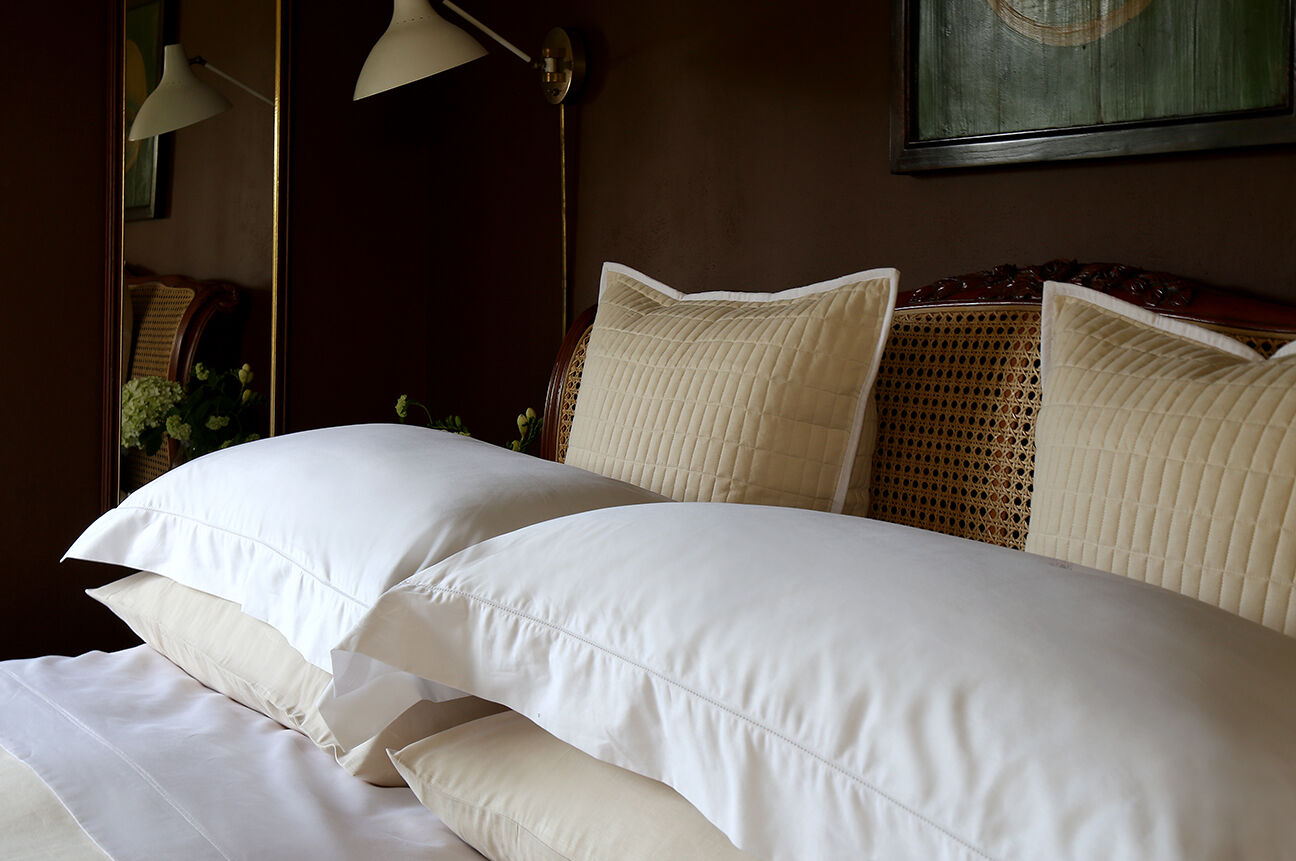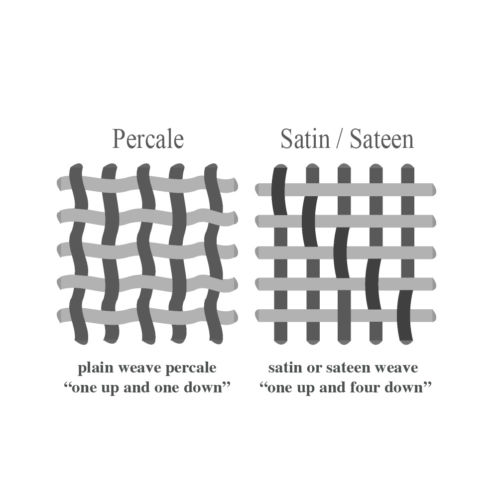People sometimes assume that Sateen sheets are a new product in the home textile market because they have been marketed strongly in the USA since the 1990’s. But like most things in life, Sateen, Satin or “Twilled” woven cloths date back many years. Infact my great grandfather’s company, John Moorby Limited, specialized in “Twilled and Plain” sheetings (i.e. Sateen and Percale weaves) as can be seen on their letterhead below dating from a century ago.
SATEEN weaves are generally more flexible and pliable than PERCALE weaves as they have less intersections and the fabric bends, hangs and drapes more easily. This phenomenon can make SATEEN sheets seem warmer. It is also more crease resistant and can look better on the bed after a night’s use.
The only downside to Sateen bedlinen is that it will probably last less time in laundering than the equivalent same thread count in Percale. Why? Because the Sateen weave has less intersections in a given area and is not held together as tightly as the Percale cloth. As the prices of both Percale and Sateen are much the same, this does tend to make Sateen sheets more expensive in the longer run and less environmentally sustainable.
PERCALE weaves are crisper, tighter and cooler in the summer and have a much longer durability in laundering as they contain more intersections of yarns in the cloth which are ultimately holding it together.
So like your whisky, your car brand or your favourite fashion brand, it all comes down to a matter of personal choice. Percale and Sateen can both be excellent cloths, but each has it owns strengths in terms of look, feel, handle, ease of laundering and durability.
So like your whisky, your car brand or your favourite fashion brand, it all comes down to a matter of personal choice. Percale and Sateen can both be excellent cloths, but each has it owns strengths in terms of look, feel, handle, ease of laundering and durability.
Because of laundering and durability, most hoteliers favour Percale sheets as these are more economic over a long period of use. Interior decorators may prefer Sateen bedlinen as they can generate that immediate “Whow” factor when you first see them. Sateen weaves also have the disadvantage that they can tend to pill more easily as the long floats of weft over warp are more susceptible to abrasion and rubbing during use.
Personally, I was conceived, born, schooled and grew up in REED Percale sheets. Infact we only started reweaving Sateen constructions again in 1997 when the American market demanded them. But now a score years on I have to concede and admit that we use Sateen sheets at home – especially during those long winter months. They have that ability to make you feel warmer in bed, and to caress your skin during cold February nights in England.
But come the summer we will move back to our tried and tested Percale bedlinen for those hot and humid evenings when crisp sheets are the most comfortable way to fall asleep.
So to answer the question – Percale or Sateen? You probably need a set of each. One for Summer and one for Winter. In this way you can have the best of all worlds.
Mark & Karen Reed – February 2022





